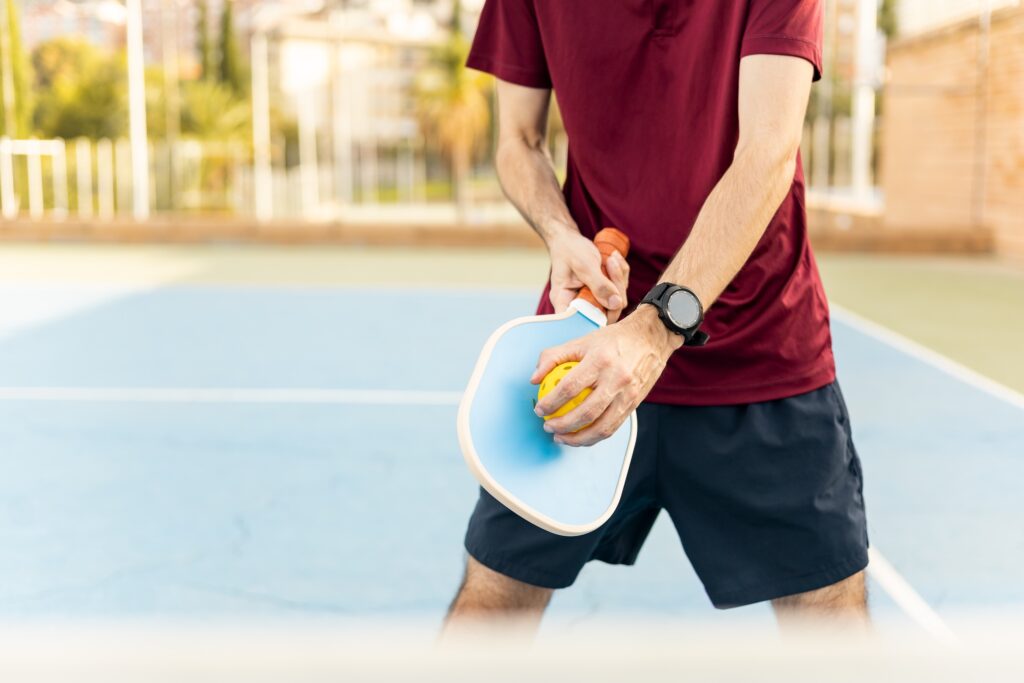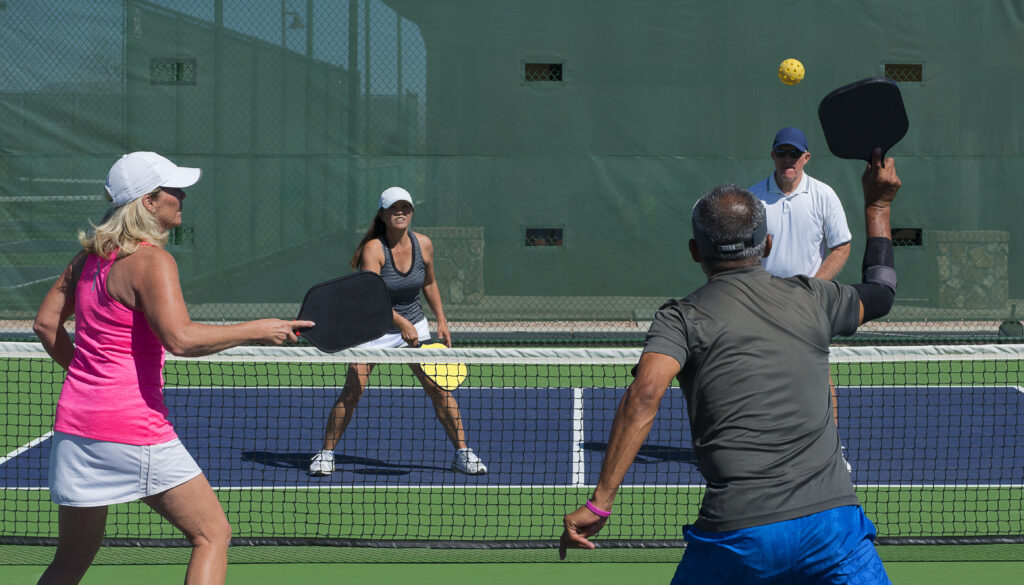Pickleball
Pickleball Fundamentals: Learn, Play, Conquer
Pickleball, a sport that has taken the world by storm, is not just for seasoned athletes; it’s a game anyone can enjoy, whether you’re a beginner or an experienced player.
If you’re curious about this increasingly popular sport but feel like a “Pickleball Dummy,” fear not! This guide on pickleball fundamentals is perfect for you. We’ll break down the core aspects of the game, including the rules, equipment, and strategies to get you started on your pickleball journey.
Pickleball 101: What Pickleball Is and Game Progression
Pickleball is a fast-paced paddle sport that combines elements of tennis, badminton, and table tennis. Played on a court slightly smaller than a tennis court, it’s suitable for all ages and skill levels. The game is typically played with a perforated plastic ball and wooden or composite paddles.
The objective is simple: hit the ball over the net and into your opponent’s side while following a few basic rules. With an easy learning curve, players can quickly pick up the fundamentals of pickleball and start enjoying the game in no time. Here’s a quick breakdown of how a typical pickleball game progresses:
- Singles of Doubles: Pickleball can be played one-on-one or with teams of two.
- Scoring: Only the serving team can score points.
- Serve Selection: The first server is usually determined randomly, often with a coin toss.
- Double-Bounce Rule: After the serve, the ball must bounce once on each side before volleys can occur.
- Serving Rules: Players must serve underhand from behind the baseline.
- Staying in Bounds: The ball must land within the court’s boundaries during play.
- Game End: Most games are played to 11 points, but you must win by at least two points to secure victory.
Extra Rules for Doubles Play in Pickleball
When playing pickleball doubles, a few additional rules come into play, making teamwork and communication essential. Unlike singles, each team has two players, which means strategy becomes just as important as mastering pickleball fundamentals. The biggest difference is how serves and positioning work, ensuring a fast-paced, dynamic game where both partners must be in sync. Here are a few rules to keep in mind when playing two-on-two:
- Alternate Serves: Each player on the serving team gets to serve before the serve switches to the other team.
- Player Rotation: After each point is scored, the server switches sides with their partner to serve to the opposite court.
- Positioning: Only the server and their partner must remain behind the baseline during the serve; players can move anywhere within their court after the serve.
- Faults: If the ball is hit out of bounds or bounces twice before returning, the opposing team takes over the serve.

Must-Know Pickleball Techniques
Mastering the right techniques is key to excelling at pickleball. Whether you’re a beginner or have already learned some of the pickleball 101 basics, understanding these core techniques will help you gain a competitive edge on the court:
- Dinking: Dinking is a soft and controlled shot crucial in pickleball. It involves tapping the ball lightly over the net, keeping it low and close to the net. Dinking is a strategic move to set up more powerful shots.
- Volleys: Volleys are shots hit before the ball bounces. Learn proper volley techniques to gain an advantage during fast-paced exchanges at the net.
- Third Shot Drop: The third shot drop is a strategic shot used to neutralize the play and regain control of the game. It typically involves hitting a soft shot close to the net from the non-volley zone.
- Lobs: Lobbing is a great defensive shot, hitting the ball high into the air to push your opponents toward the back of the court. This technique gives you time to reset and plan your next move.
Proper Pickleball Etiquette
Pickleball isn’t only about mastering techniques and strategies; it’s also about embracing the social and respectful nature of the game. Whether playing casually or in a competitive setting, following good etiquette ensures everyone enjoys the game. Adhering to these pickleball fundamentals of sportsmanship and courtesy will make you a valued player on the court and enhance your overall experience.
- Communication: Effective communication with your partner is crucial. Use verbal cues and establish a game plan to cover the court efficiently.
- Court Movement: Understand proper court movement to cover your side efficiently and anticipate your opponent’s shots.
- Respect for Opponents: Pickleball is a social sport. Treat your opponents with respect, and always follow good sportsmanship.
- Line Calls: Always be honest when calling balls in or out. If there is any doubt, give your opponent the benefit of the doubt.
- Quiet Between Points: Keep noise to a minimum between points to avoid distracting other players on nearby courts.

Learning Resources
Having the right resources is key when you’re ready to take your pickleball skills to the next level. Whether starting with pickleball 101 or looking to refine your techniques, there are plenty of ways to continue to improve. Here are some great resources to help you learn:
- Online Tutorials: Utilize online tutorials and videos to watch and learn from experienced players. Platforms like YouTube offer a plethora of instructional content.
- Local Pickleball Communities: Join local pickleball communities to meet fellow players, participate in games, and learn from more experienced individuals.
Safety Tips
Staying safe on the court is just as important as mastering the fundamentals of pickleball. Key safety tips include:
- Proper Footwear: Wear appropriate court shoes to ensure good traction and prevent injuries.
- Stretching: Prioritize a proper warm-up and stretching routine to avoid strains and injuries.

Take Your Pickleball Game to the Next Level
Whether you’re playing for fun or aspiring to compete, pickleball offers a blend of excitement, strategy, and camaraderie. Armed with this pickleball 101 guide, you’re ready to step onto the court, paddle in hand, and dive into the thrilling world of pickleball. So, grab a partner, hit the court, and embrace the joy of this rapidly growing sport.
Ready to elevate your game even further? Explore Dominator’s range of premium pickleball gear, cutting-edge court lighting solutions, and versatile basketball hoops to create the ultimate, multi-game court setup.





















